Coaching soccer drills to younger players is a challenge for many coaches. It’s natural that kids have less attention, concentration, and patience with long lectures and complex instructions. In addition, younger players don’t think as fast as adults; their reaction time is slower, which means that they need simple instruction and complex drills. Creating a game plan as a soccer coach involves thinking strategically about the game:
- What are your strengths and weaknesses?
- How can you exploit the other team’s weakness while reducing their ability to exploit yours?
With this in mind, here we provide some useful tips on how to coach soccer drills effectively to young players. With these soccer drills, you’ll be able to improve your child’s ball-handling skills, increase their confidence on the field, and introduce them to some basic offensive tactics. It is important to remember that while they may seem simple, it is essential that your child focuses on each drill. The more attention they pay to these exercises, the quicker they will see results. If possible, assign a partner as well as a non-playing coach who can observe from the sidelines and offer positive feedback after each drill.
How to coach 4-year-old kids soccer
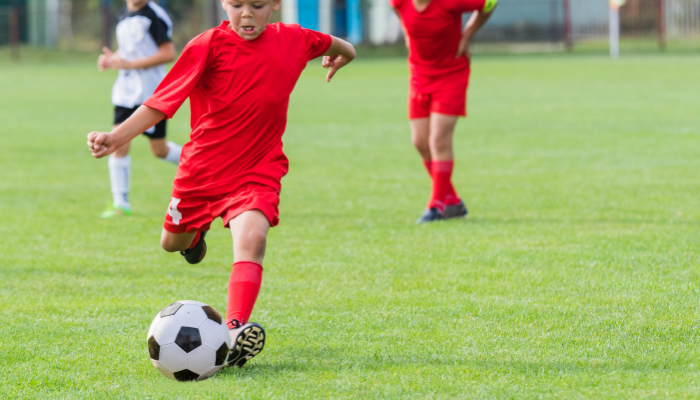
What you need to coach
First and foremost, you need to love kids. If you are going to successfully coach 4-year-old kids, you need to genuinely love being around them. This is because coaching 4-year-old kids is a lot different from coaching older age groups. You will need to communicate with them in a different way, facilitate their development with different drills, and understand how to motivate them. Being a good role model is important too. Always remember that your players are watching you and will try to mimic the things you do. If you are always positive, they might just do the same! You should also have a general understanding of soccer. Although you will not be teaching your kids any soccer skills or strategies (which we will cover later on), having knowledge of the sport will help you communicate with your players and parents.
How to prepare for your first 4-year-old kid's soccer practice
The first thing you will want to do is make sure you have the right equipment for coaching your kids. This includes having the right soccer balls for kids, goals, and any other necessary equipment for the drills you plan to run. Make sure you have put everything away beforehand as well, so you can start the practice in a timely manner. Other necessary items are a white board or flip chart, soccer coaching cards, a whistle, and cones. The board or chart will help you keep track of time and display any new vocabulary words you want to introduce to your players. The coaching cards are helpful for showing players alternative ways to do a drill, as well as helping them understand the reasons behind certain tactics. Using a whistle will let your players know you are ready to start and end certain drills. Cones are helpful for setting up small-sided games, as well as marking off areas of the field for special drills.
Coaching fundamentals for 4 year old children
For a 4 year old soccer player, the most important fundamental to focus on is enjoyment and fun. This can be a tricky one for some coaches, but remember that at this age, kids are just beginning to learn the game. They might not be the most skilled, but they want to be. You want to make sure that you are keeping your practices fun and engaging. Since your players do not have the skill and coordination to do many of the drills used with older players, you need to find ways to make things both fun and challenging for them. It is also important to remember that kids learn best when they are involved in the process. You want your players to feel like they have some control over what is going on, so make sure you are asking for their input whenever you can.
How to encourage good habits
As mentioned above, kids are constantly learning and trying to imitate whatever they see and experience. At this age, they are also very receptive to forming positive habits. You can use this to your advantage by encouraging good soccer habits amongst your players. Here are a few tips for doing so:
- Make sure you are setting the example for your players by showing them what it means to be a good teammate.
- Always encourage your players to respect their teammates, and make sure they are playing by the rules.
- Model good sportsmanship by being positive towards both your players and their teammates whenever possible.
- Create a positive and encouraging environment during practices by being loud and energetic, but also remain calm when necessary.
- Lastly, always praise your players when they are doing things right. Doing so will help them associate positive feelings with the good habits you want them to adopt!
Helping your players develop motor skills and coordination
One of the most important things you can do as a coach is help your players develop the skills they need to play the game. This includes working on their motor skills and coordination.
During practices, you can help your players develop motor skills by using games with smaller rules that challenge their speed, agility, and coordination. All of these skills will help them when they begin to play the actual game of soccer. You can also try incorporating some of the following activities into your practices to help develop motor skills and coordination:
- Ball Roll - Place a small ball or a rubber ball on a flat surface and have players roll it back and forth. This is great for improving eye-foot coordination, hand-eye coordination, and motor skills.
- Blindfolded Throw - This can be used as a warm-up drill or a way to help improve accuracy and hand-eye coordination. Have your players stand a few feet away from a teammate who is holding a ball. Then have the players throw the ball at their teammate. The teammate should try and catch the ball with one hand (without moving their feet).
- Egg and Spoon Races - This can be done in groups of two or more. For younger players, use plastic spoons and plastic eggs. Break the eggs open and make sure they are empty. Have players stand on a starting line with an egg in one hand and a spoon in the other. The first person in each group to finish eating the egg and putting the spoon down on a table wins. This helps improve hand-eye coordination, timing, and motor skills.
- Star Crabs - This is a great way to challenge your players’ coordination and motor skills. Set up a “crab” formation with two lines of players facing each other with their legs apart. The lines should be about 3-4 meters apart from their teammate. Make sure to instruct the players that they must stay in their line without stepping out of it. There should be one ball in the middle of each line. The players in the middle of the line should try to kick the ball to their teammates while staying in the crab formation. The other players should attempt to intercept the ball before it reaches their teammate. This drill is great for improving footwork and communication because you have to call out where you want the ball to go!
Strategies to help your players learn Soccer skills
Depending on the level of experience your players have, you can either try to implement various skills into one practice or separate them into different sessions. Beginners will benefit best from having one skill focus per practice, while intermediate and advanced players can handle two or three. For beginners, ball control is the most important skill to focus on. This includes dribbling, passing, receiving, and shooting. Once this skill is mastered, you can then focus on footwork and spacing. Once these two skills are also mastered, you can add in other skills like trapping and heading the ball.
Helping your players build confidence and self-esteem
As a coach, you will have many opportunities to help build your players’ confidence and self-esteem. There are so many different ways in which you can do this, but there are also some things you need to be careful with when coaching 4-year-old kids! For starters, make sure you are being positive during practices and games. Your players are young and impressionable, and they will be trying to emulate you as a coach. If they see that you are always frustrated or angry when they make a mistake, they might get the wrong idea! You can also use positive reinforcement in practice. This can be anything from giving out stickers to rewarding your players with some free time once they have finished their practice.
Additional Tips For Coaching 4-Year-Olds
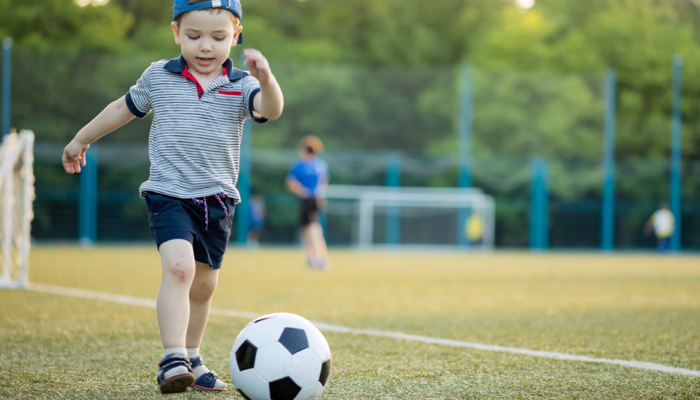
Don’t forget to have fun! While it’s important to make time for practicing soccer skills and drills, it’s equally important to remember that these are kids we’re talking about. Make sure your child is having a good time while playing and that you’re managing their expectations. Keep in mind that your child is just learning the game and that it will take time for them to see results.
- Make sure your child is wearing the right gear! When playing outdoors, your child should be wearing shin pads, proper footwear, and a soccer first aid kit. If your child plays indoors, they should be wearing indoor soccer shoes, a mouthguard, and a soccer uniform.
- Don’t forget to stretch! All great athletes know the importance of warming up before they start playing. Make sure your child is doing at least a few minutes of stretching before playing soccer. This will help them avoid injury and improve their flexibility and mobility.
- Stay hydrated! It’s easy to forget to drink water while playing soccer, but it’s extremely important. Make sure your child is drinking water regularly while playing and possibly bringing along a water bottle just in case.
Establish a clear objective for each drill
Younger players will have short attention spans and may need to be reminded of what the purpose of each drill is. The objective for each drill should be clear to the players and to the coaches as well. A good soccer drill should do one or more of the following: An effective drill should reinforce skills, strategies and concepts that are relevant to the game. The drill should also allow the coach to observe how players apply these skills through the game situation. The drill should also promote a fun and enjoyable playing environment.
Be brief and be proud of your instructions
With younger players, the coach must be brief with his instructions. The coach should be proud of the instructions to his players. When you are brief with your instructions, you help your players focus on the most important information that will help them improve. Even though younger players have short attention spans, you can still provide them with quality information. But you have to be brief and consistent. Every time you give instructions, you have to make sure that they understand what you are trying to teach them. Make sure that you are consistent with the instructions that you give throughout the practice.
Use props to reinforce instruction and formation
Kids learn through imitation, so you can use props to illustrate key aspects of the game, such as passing and receiving, or marking an opponent. You can also use props to reinforce the team’s formation and movement. You can use cones to mark a passing lane, mimicking the space on the pitch that a pass should travel to. You can also use a ball to diagram a play, and then have the players practice it. You can also use a soccer ball to demonstrate player position at the start of each drill, and to help players maintain formation as the drill progresses. Be sure to have players face each other as they position themselves, as well as switch positions during the drill to accommodate different learning styles.
Provide simple instructions before the game
You can provide some simple instructions before the game. For instance, you can tell your players that the purpose of the game is to score one more goal than the opposing team. You can also tell your team that they have to play as a team and work together in order to win. Before the game, you can also provide your team with a few positive words of encouragement that will help them stay focused on the game.
Rotate players often to accommodate different learning styles
During the soccer drills, you can rotate players often to accommodate different learning styles. For instance, when coaching a passing drill, you can pair beginners with advanced players. You can also put two players together who have a similar ability level. Rotating players often will help them practice skills in a variety of different situations. If a player is consistently put in the same situation, he or she will start to make decisions based on habit instead of thought. Rotating players often will reduce the risk of this happening.


Improve Your GameJust 1.99 p/m
Exclusive drills and sessions, get involved today!
- 100’s of Drills
- Coach to Camera Videos
- Sessions from Pro’s
- Industry Leading Advice
Coaching Drill Types
Dribbling Exercises
Dribbling is arguably one of the most important soccer skills. The better a player is at dribbling, the less likely they are to turn the ball over and the more likely they are to create scoring opportunities. That’s why you should make dribbling a priority for your 4 year old. These dribbling exercises will help your child improve their ball control and develop their confidence with the ball. Dribbling is an excellent drill to start with because it can be done anywhere and with a low risk of injury. Make sure your child is wearing appropriate soccer shoes before getting started.
- Wall Training: The wall training drill is a simple yet effective way to improve your child’s ball control. The drill involves your child dribbling towards a wall and bouncing the ball off the wall before catching it with their other foot. Try to complete this drill with both feet.
- Ball Roll: While dribbling, your child should try to make the ball roll as smoothly as possible without stopping. This drill is a great way to develop the use of the inside of the foot while dribbling. It’s also a great way to improve your child’s balance.
Double-Touch Drills
In these double-touch drills, your child will dribble the ball with both feet while trying to complete a series of passes with their teammates. This can be done with a partner or in a larger group. The goal is to complete the drill without turning the ball over. If a pass is made incorrectly, the group starts over at the beginning. This drill is a great way to get your child used to passing the ball with both feet. It’s also a good way to help your child improve their ball control. Make sure your child is wearing appropriate soccer shoes before getting started.
- Partner Passing: With this drill, your child should dribble the ball with both feet while trying to complete a series of passes with their partner. The goal is to make all the passes with both feet. This is a good drill for beginners.
- Group Passing: In this drill, your child should dribble the ball with both feet while trying to complete a series of passes with other players. The goal is to make all the passes with both feet. This drill is a great way to improve your child’s ball control.
Passing Drills
This drill is a great way to help your child improve their accuracy when passing the ball. It’s also a good way to help your child learn how to use different parts of the foot while passing. Make sure your child is wearing appropriate soccer shoes before getting started.
- Partner Passing: In this drill, your child should take a series of short passes from their partner. They should focus on contacting the ball with the instep of their foot when passing with their inside foot and with the laces of their foot when passing with their outside foot.
- Group Passing: In this drill, your child should take a series of short passes from other players. They should focus on contacting the ball with the instep of their foot when passing with their inside foot and with the laces of their foot when passing with their outside foot.
Marking And Defending Drills
This drill is a good way to help your child learn how to defend against an opponent who is trying to tap the ball behind their own goal line. Make sure your child is wearing appropriate soccer shoes before getting started.
- Get Behind The Ball: In this drill, your child should get behind the ball and wait for an opponent to try to tap the ball behind their own goal line. When this happens, your child should tap the ball back towards their own team. Your child should continue doing this until the drill ends.
- Face The Goal: In this drill, your child should get behind their own goal line and wait for an opponent to try to tap the ball behind their own goal line. When this happens, your child should tap the ball back to their teammate. They should continue doing this until the drill ends.
Free Grassroots Fun Soccer Games eBook

Keeping players on top of their game throughout the season is critical, and small-sided games are ideal for this. There are over 50 activities in this guide to help you do just that.
Download Free NowCupello 4 Year Old Soccer Drills
1. Mastering the ball
Having players learn how to handle the ball in unopposed and competitive situations will enhance their ability to win 1v1 clashes and move the ball quickly when necessary.
2. 1v1 to Goal
Dominating 1v1s and beating opponents is crucial at every stage and level of development, if you want to be able to manipulate the ball.
3. Tails
Developing players' basic movements and skills is a fun game to play.
4. Rule the Castle
This fun and inclusive game helps you practice dribbling and winning possession.
5. Christmas Cracker
It's important to vary our sessions to ensure players get to work on the social corner, and Christmas is a great time to do this! This is a great game to play with your friends. You'll see their smiles getting bigger and bigger as they play.
Last Words
Congratulations! You’ve made it to the end of this article and now have a better understanding of what to do to help your child improve their soccer skills and confidence on the field. With these drills, you can expect your child’s soccer abilities to improve tremendously. You can also expect your child to have a lot of fun while doing it.
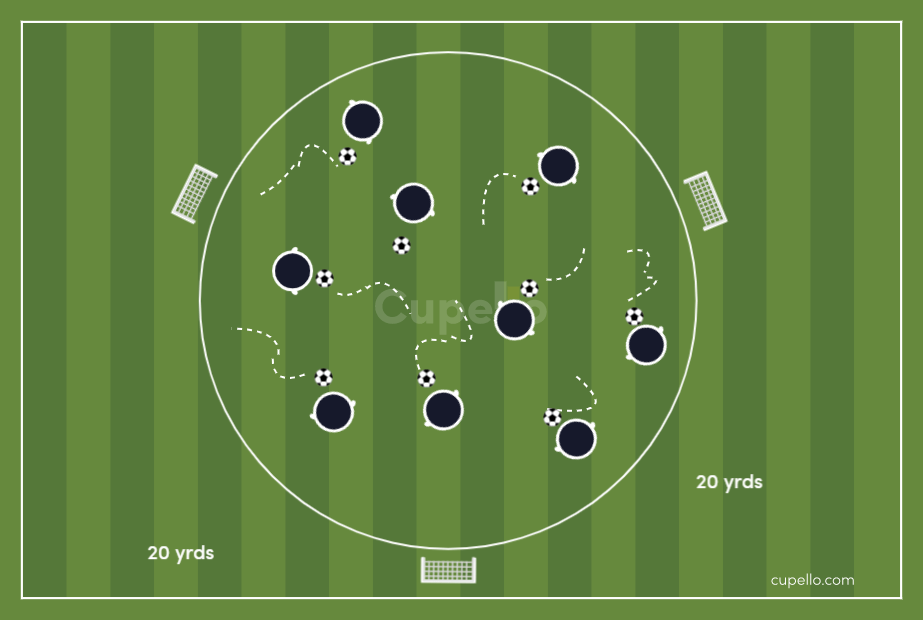
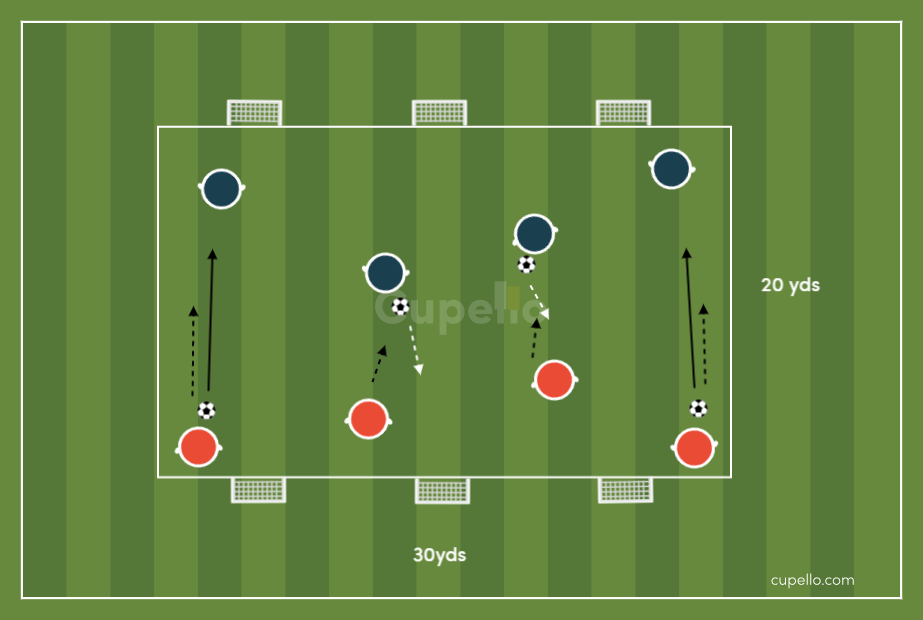
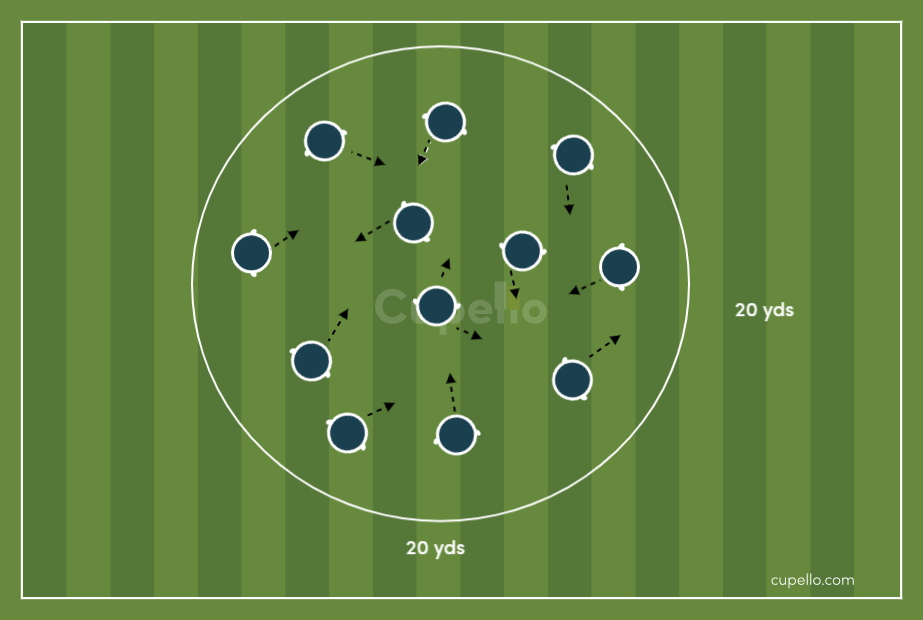
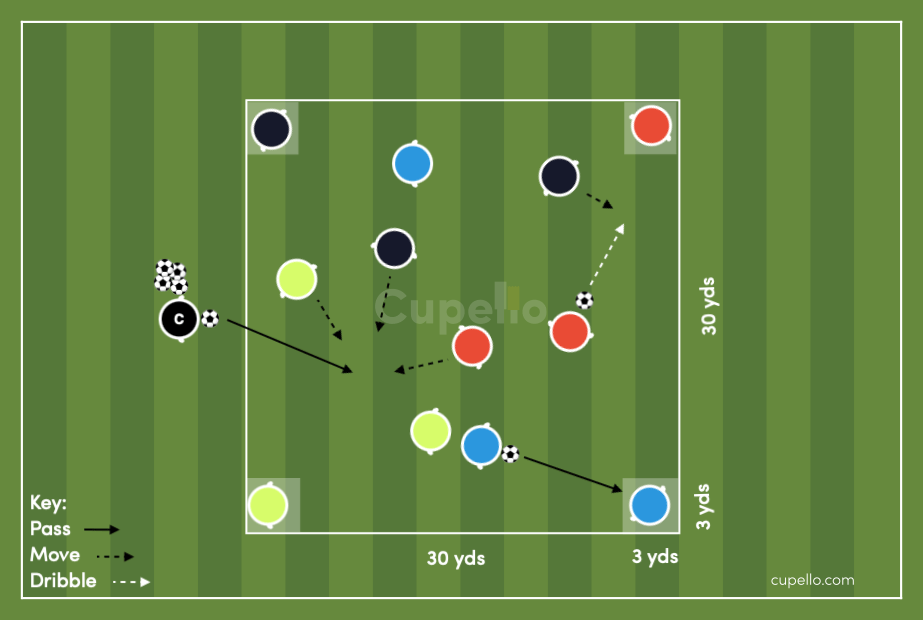
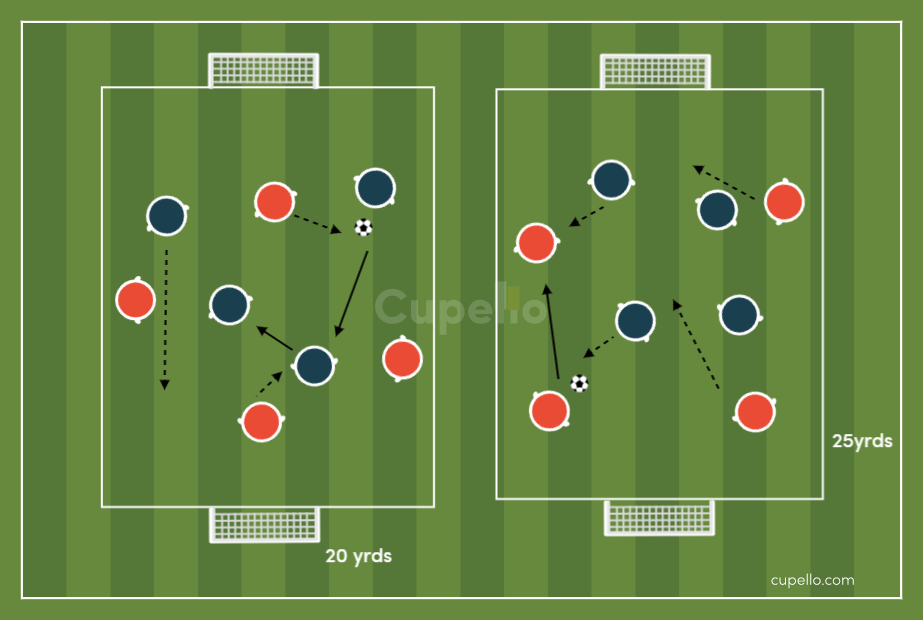
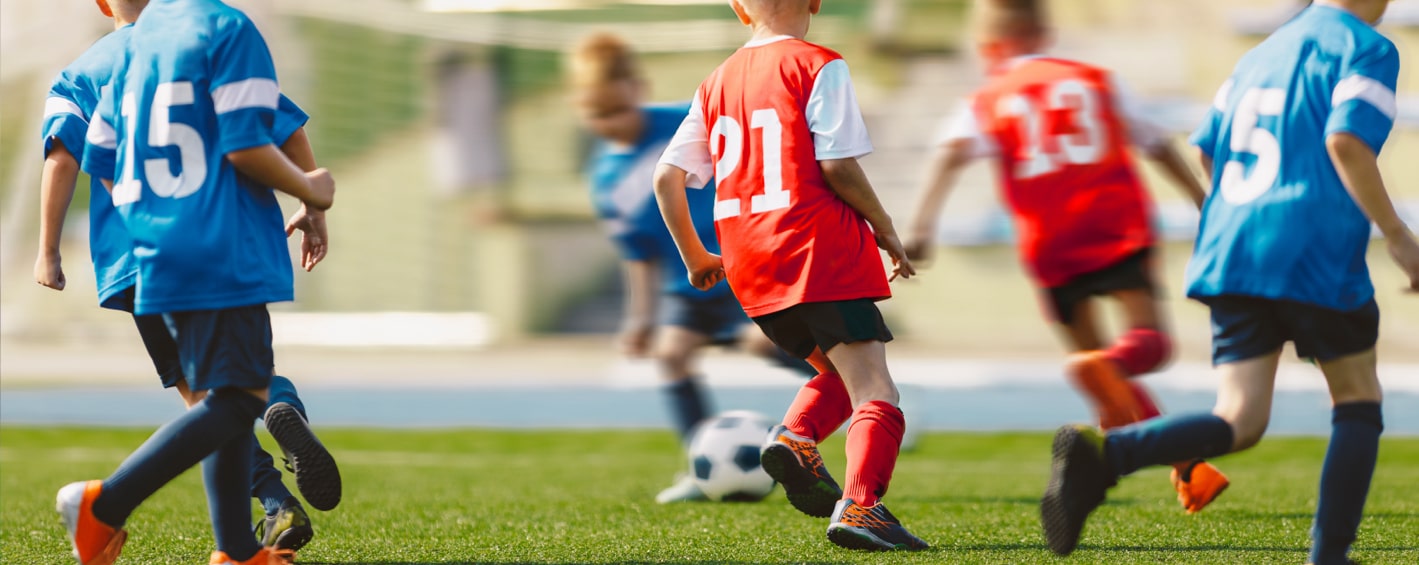
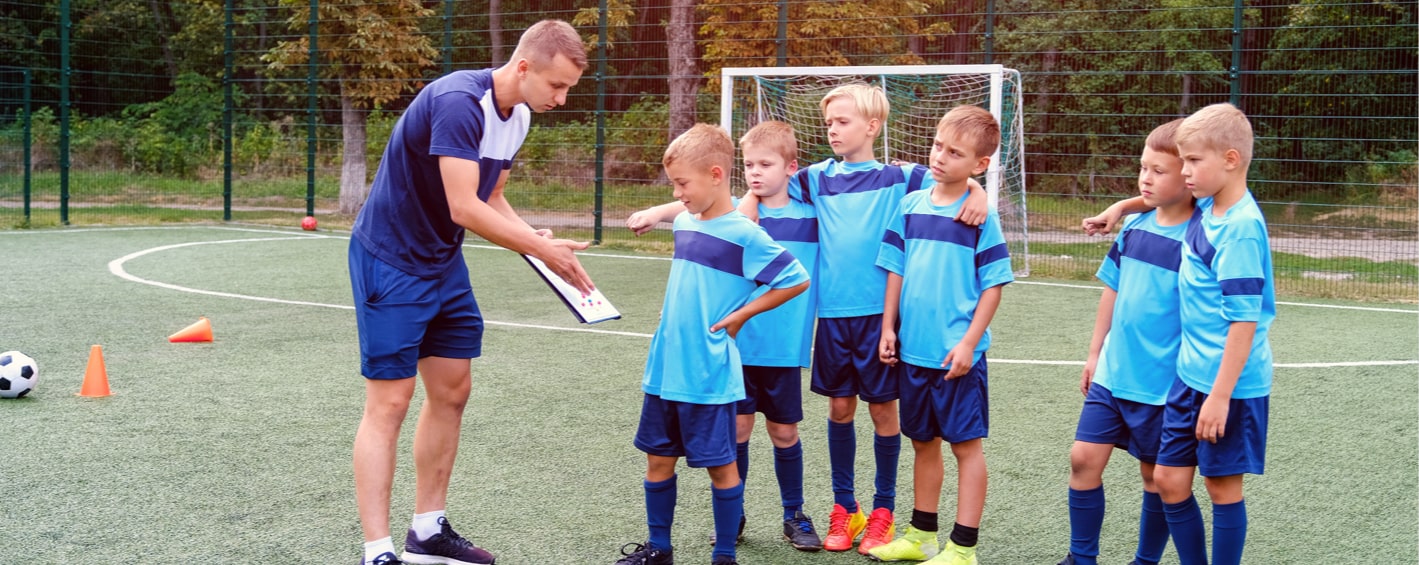

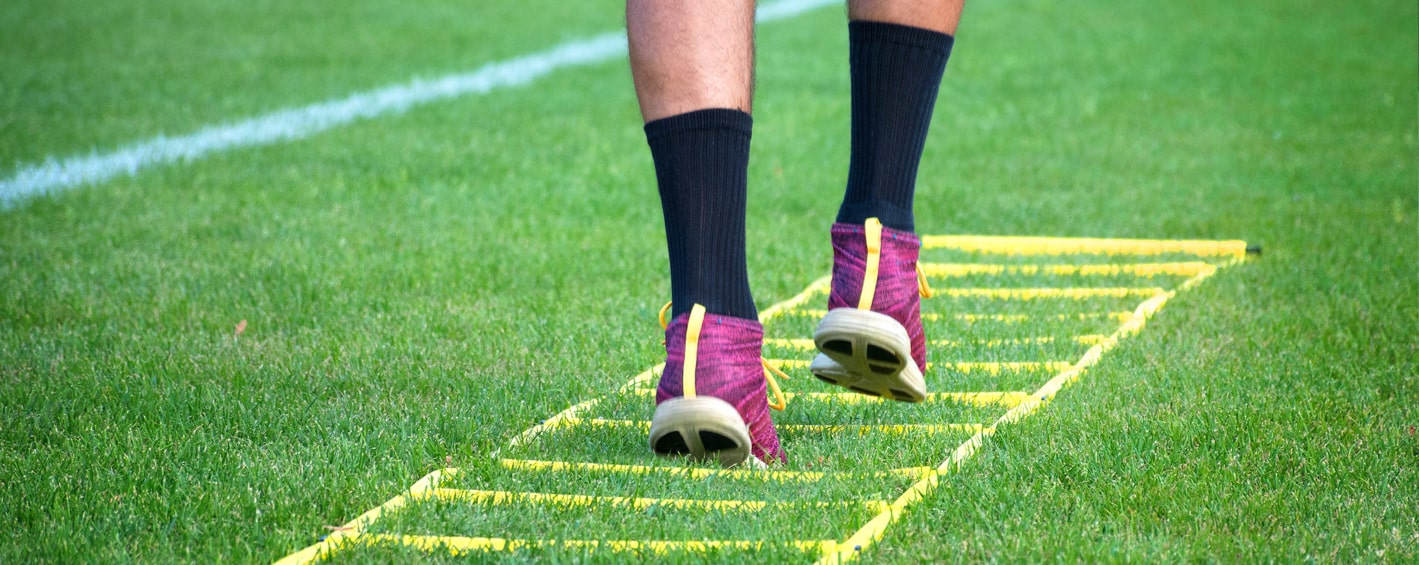
Cupello
Rethinking soccer coaching via our industry leading tools. Built to offer effective coaching development solutions for players and coaches of all levels.